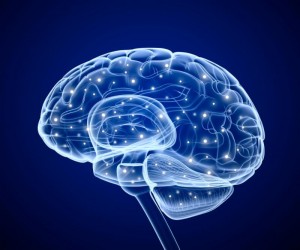
Clients and therapists alike have long attributed the benefits of massage to changes made within the musculoskeletal system. While this is true, recent advances in imaging technology have directed focus toward an expansive, additional area – the brain. From an unchanging, passive receiver of messages to a dynamic, evaluative, adaptive orchestrator,we are slowly discovering the brain plays a huge role, especially in how we are able to perceive and use our bodies. One of the central principles that makes this area of research exciting is the concept of neuroplasticity.
Neuroplasticity is the capacity of the brain to change it’s structure and function.(1) The brain changes with experiences and continues to do so throughout life, both positively as well as negatively. When pain persists over periods of time, the brain begins to function differently, which may actually contribute to the pain experience.(2)Neural networks responsible for providing the experience of pain become dysfunctional. Some areas become sensitized, meaning they require less stimuli to initiate a response.(3) The nervous system’s ability to suppress incoming ‘danger signals’, called descending inhibition, become inefficient and instead the same incoming ‘danger signals’ may be amplified, called descending facilitation. G.L. Moseley and H. Flor observed that “the combination of sensitization and disinhibition drive systematic change in the response profile of neurons that represent the body.”(4) Regions your brain start to reorganize. Areas of the brain which normally respond to input from parts of the body appear in adjacent areas.(5)
Changes in the physical make up of the brain due to pain are now able to be measured as well. Key areas in the brain have shown significant decrease in grey matter density. The amount of change in the brain is strongly related to the duration of and type of pain.(2)
Fortunately, the discovery of neuroplasticity can be used to help prevent pain and dysfunction. Areas that have been affected have been shown to re-reorganize as well.(5,6) Much of the research in this area is still in its infancy but there is data indicating that when targeting the brain, not all input is equally effective.(7) For example, G.L. Moseley et al., demonstrated that tactile (touch) stimulation alone of a painful area with associated brain changes was not sufficient to decrease pain, increase accurancy in perceiving touch, or facilitate changes in the brain. They found that when recipients paid attention and differentiated between different types and locations of stimuli, changes in all three of those categories occured.(8)
How does the bodywork received at SMI fit into all of this information?
Bodywork received at SMI is accompanied by a constant, expert, and clear communication between therapist and client. In every session, our clients have an opportunity to explore more specifically and more accurately, details about what they are experiencing. The therapist asks clarifying questions, i.e. “Is there a time of day your pain appears to be better or worse?” or “Is there any position or range of motion that seems to make your pain better or worse?”. This engages the client and enables them to differentiate and understand their condition. During this process, the clients’ understanding may evolve from a vague explanation such as “my shoulder hurts” to a more specific and beneficial explanation, like “the back part of my shoulder hurts at the end of the day, especially when I try to lift it over my head.” This gives important information to the therapists’ in terms of how we work. Also, it gives the client an opportunity to better understand their experience and engage the higher centers of the brain.(4,7)
Bodywork from SMI operates on this level in the ‘hands-on’ work. One of the most important aspects of the work we do is the communication between therapist and client. Therapists often work within very specific locations, the amount of pressure and the type of technique used is based on client feedback. Clients are asked to compare
between different areas of contact and give feedback on the qualities of sensations experienced. For example: dull, achey, burning, warm, cold, shooting pain,etc…
Can we recreate the pain you experience ? Is the quality and quantity different than what you normally feel? Again, this is important for the therapist and also provides you an opportunity to better understand and define your experience.
To sum up this information we can say:
Neuroplasticity is an important new discovery which means that the brain changes structurally and functionally. In cases such as persistent pain, some of these changes include decreased grey matter, increased sensitization, reorganization of the brain’s ‘map of the body’, and an inability to suppress incoming ‘danger signals’. The same ‘plasticity’ that caused the brain to undergo these changes enables them to be reversed as well.
Therapists at SMI use these principles to aid our clients in this process.
For more information regarding neuroplasticity, please refer to The Brain that Changes Itself by Norman Doidge.(9)
References:
1.Siddall PJ. Neuroplasticity and pain: what does it all mean? Med J Aust 2013 Mar 4;198(4);177-8.
2.Apkarian AV, Baliki MN,Geha PY. Towards a Theory of Chronic Pain. Progress in Neurobiology2009;87(2):81-97.
3.Woolf CJ. Central sensitization: Implications for the diagnosis and treatment of pain. Pain. 2011 March:152(3Suppl):S2-15.
4.Moseley GL, Flor H. Targeting cortical representations in chronic pain: a review. NeurorehabilNeural Repair. 2012 Jul-Aug;26(6):646-5
5.Flor H, Braun C, Elbert T, Birbaumer N. Extensive reorganization of primary somatosensory cortext in chronic back pain patients. Neurosci Lett 1997;224(1):5-8.
6.Gauthier LV, Taub E, Perkins C, Ortmann M, Mark VW, Uswatte G. Remodeling the brain plastic structural brain changes produced by different motor therapies after stroke. Stroke. 2008 May;39(5):1520-1525.
7.Wand BM, et al., Cortical changes in chronic low back pain: Current state of the art and implications for clinical practice, Manual Therapy 2011 Feb;16(1):15-20.
8.Moseley GL, Zalucki NM Wiech K. Tactile discrimination, but not tactile stimulation alone reduces chronic limb pain. Pain. 2008 Jul 31;137(3):600-8.
9.Doidge N. The brain that changes itself: stories of personal triumph from the frontiers of brainscience. London: Penguin Books, 2007.

